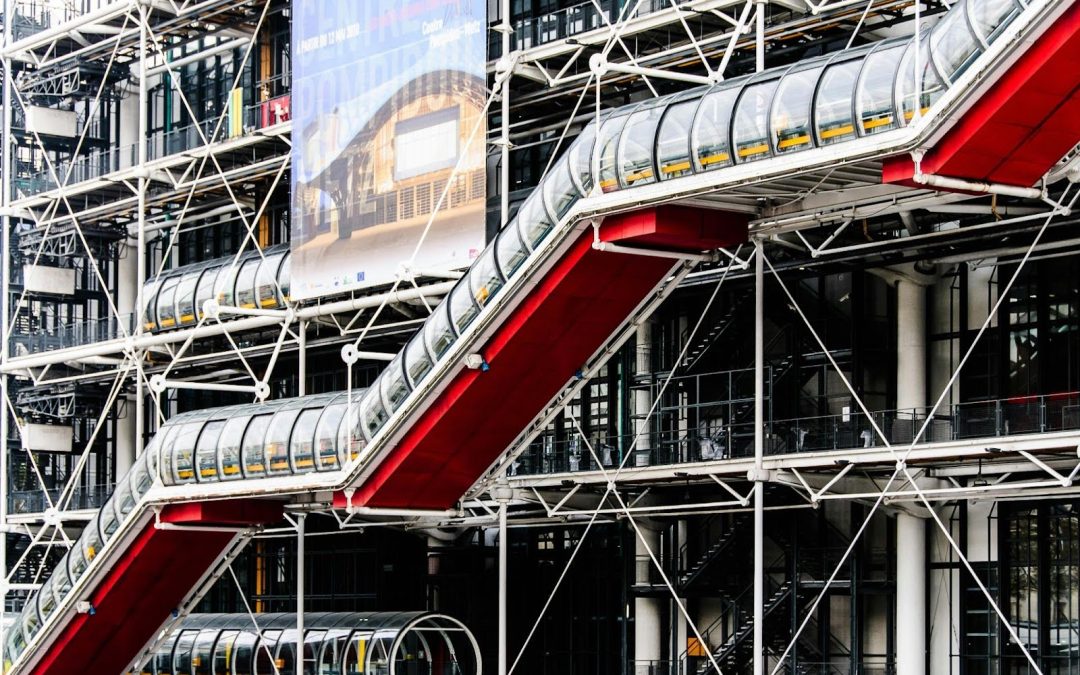The steel industry, the backbone of modern construction, is facing a tough time as demand for steel is skyrocketing.
While the world continues to innovate in structure to reflect the needs of a burgeoning populace and its work/life habits, increasingly stringent regulations are posing challenges to steelmakers. A trend of rising costs in raw materials and energy, in addition to this, ultimately squeezing profit margins – giving rise to a need in creating efficiencies in the development pipeline where it’s possible.
Exploring this landscape of short cuts and potential cost leverages, steel companies are turning to smart technology like AI, as the figurative eye of the storm captivating the 21st century. A recent Boston Consulting Group study further highlights the transformative potential of AI in the steel industry.
By harnessing AI’s ability to analyse vast datasets and make data-driven decisions, structural steel manufacturers can condense their operations, reduce waste, and improve product quality, ensuring a sustainable future for the industry.
But how exactly can AI be integrated into steel production processes? What specific AI tools are available to address industry pain points? Let’s explore these questions to uncover the potential of AI in transforming the steel industry.
Key Ways AI Benefits Structural Steel Manufacturers
As manufacturers seek innovative solutions to improve their processes and address industry challenges, several key applications of AI are proving to be particularly beneficial.
Predictive Maintenance
Unexpected equipment failures can significantly disrupt steel production, impacting both production schedules and operational costs. Predictive maintenance solutions, like GE Predix, make use of its data storage and governance capabilities to engage in big-data analyses in the long term. This allows for QA and other production personnel to better identify anomalies in patterns of usage, and predict potential failures in critical equipment such as blast furnaces, basic oxygen furnaces, continuous casting machines, and rolling mills.
By detecting early warning signs like excessive vibration, temperature fluctuations, pressure spikes, or motor current imbalances, these solutions enable proactive maintenance, minimising unscheduled downtime, optimising resource allocation, and improving overall site efficiency as a result.
Inventory and Demand Forecasting
Volatile market fluctuations and dynamic project lifecycles can significantly impact steel demand planning. Large language forecasting tools, like SketchDeck.ai, leverage analysis of large data sets to estimate required steel resources, bidding needs and project scope across various structural steel segments. This granular analysis, encompassing product categories like beams, columns, plates, and rebar, empowers manufacturers to engage in steel take-off at a much faster rate.
By proactively adjusting production schedules, optimising raw material procurement, and streamlining logistics, these tools can lead to smoother operations, reduced inventory holding costs, and a more competitive edge in the marketplace.
Streamlined Design and Fabrication
The steel industry’s traditional design and detailing processes, involving 3D modelling, structural analysis, and fabrication drawings, are often time-consuming and error-prone. AI-assistant tools, like Autodesk BIM 360, automate routine tasks and optimise designs. This cloud-based platform integrates design, fabrication, and construction data, enabling seamless collaboration between engineers, fabricators, and contractors.
Its AI algorithms can identify potential clashes, interferences, and inconsistencies in structural steel models, such as beam-column connections, plate intersections, and weld details, leading to faster and more accurate fabrication. By automating repetitive tasks and enhancing design accuracy, AI streamlines the entire process, increasing efficiency and reducing errors.
Challenges Facing Structural Steel Manufacturers Adopting AI
The structural steel industry, relying on traditional methods like AutoCAD, is facing pressure to innovate. Many facilities are equipped with older machinery hindering AI integration. While AutoCAD is valuable for design, it lacks AI’s advanced analytics. AI-powered systems can optimise processes and improve efficiency. However, implementing AI requires specialised skills, posing a challenge for manufacturers. Overcoming these challenges is crucial to unlocking AI’s full potential in the steel sector.
What’s Next for Structural Steel Manufacturing with AI?
As AI becomes more ingrained in structural steel production, we’re likely to see even bigger advancements, including fully automated production lines, digital twins for precise production planning, and improved supply chain transparency. Structural steel manufacturers who adopt AI can expect to not only streamline operations but also gain a competitive edge. AI will be vital for companies seeking to balance productivity with sustainability as demands on steelmakers continue to evolve.
AI and Structural Steel Manufacturers
As the steel industry evolves, artificial intelligence is emerging as a powerful tool to drive innovation and efficiency. By leveraging AI, manufacturers can streamline operations, improve product quality, and enhance safety standards.
Weldform Structures is committed to helping steel manufacturers stay ahead of the curve. Our tailored solutions can help you transform your business and achieve lasting success. Contact us today to learn more about how we can help you build a stronger, more sustainable future.

